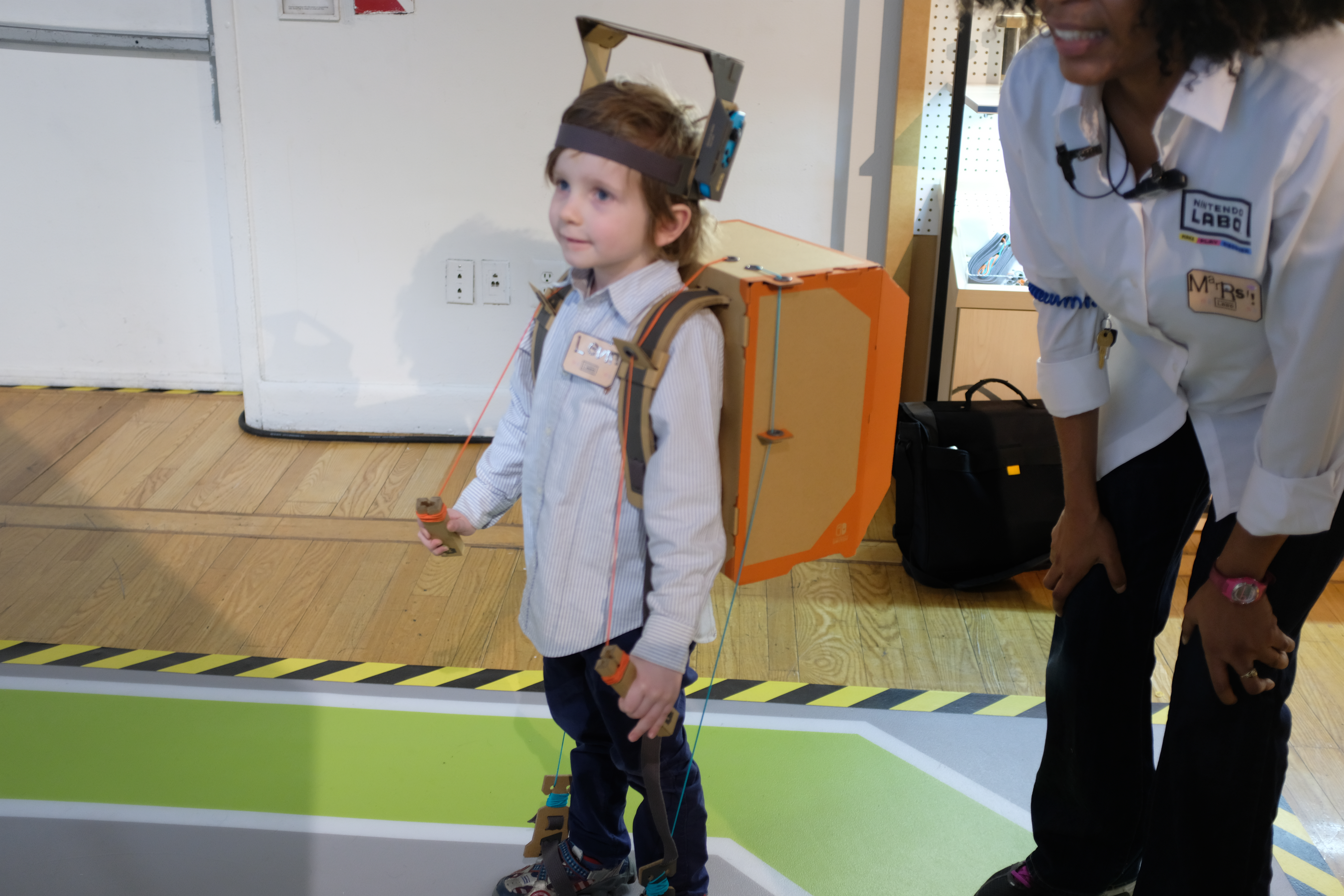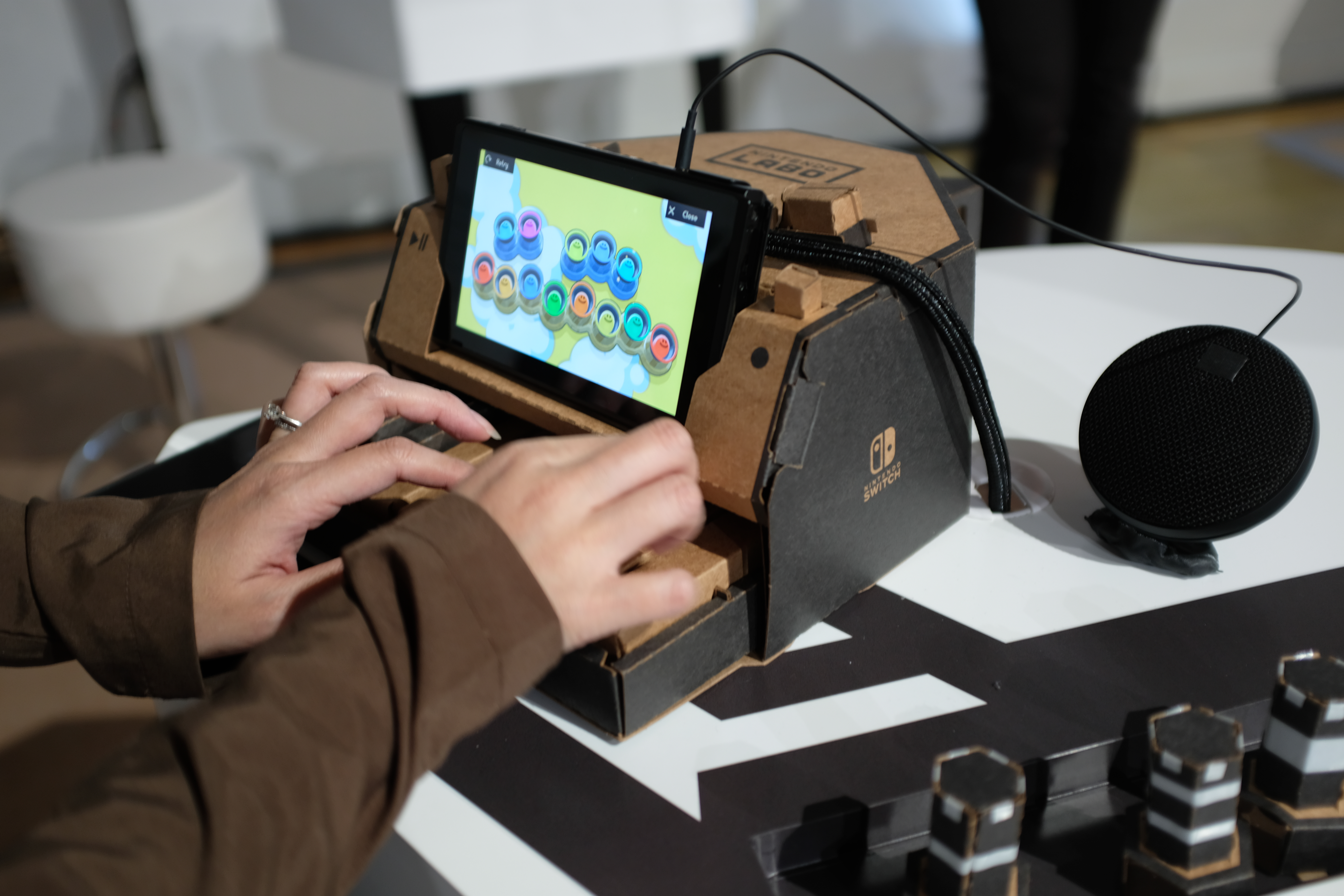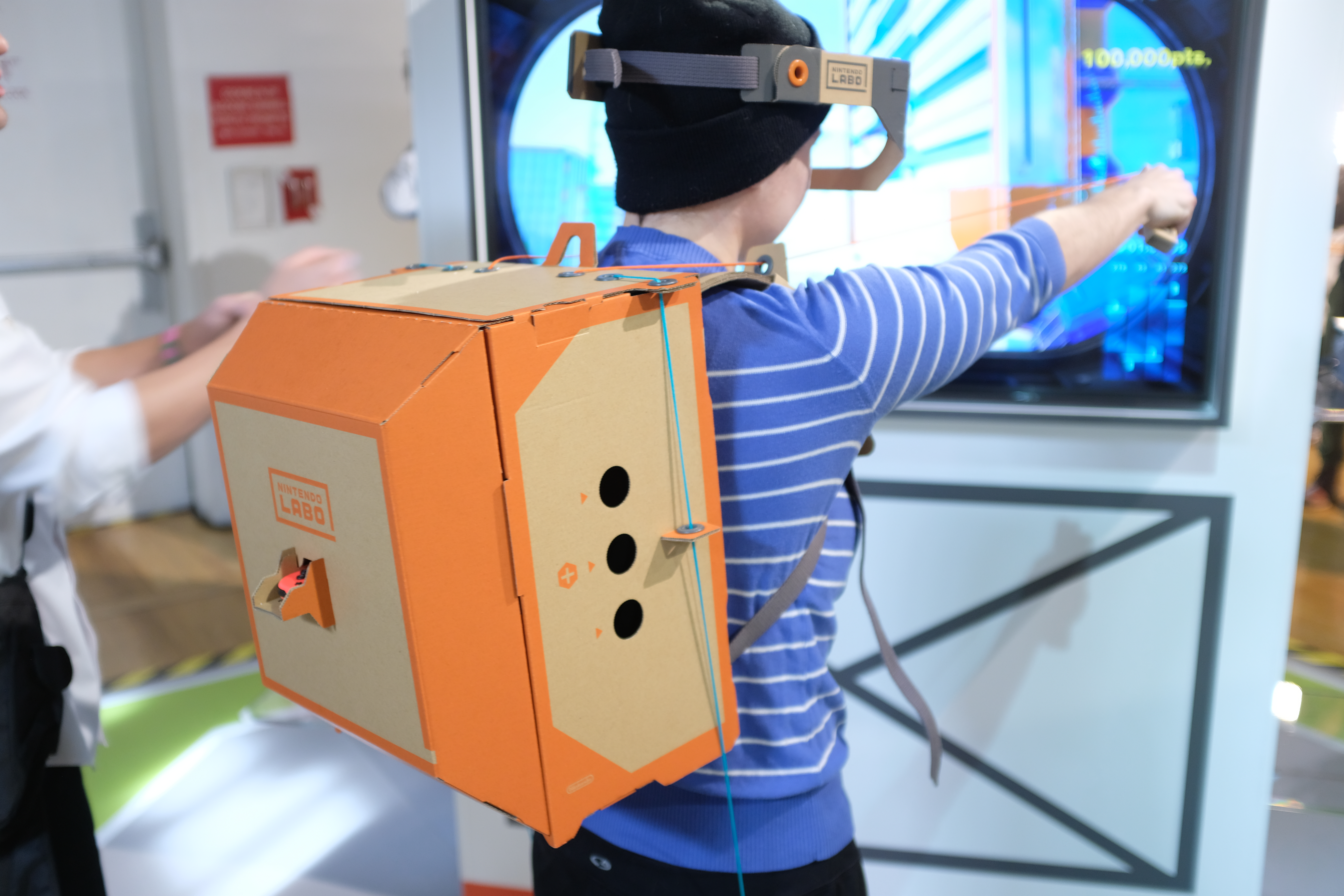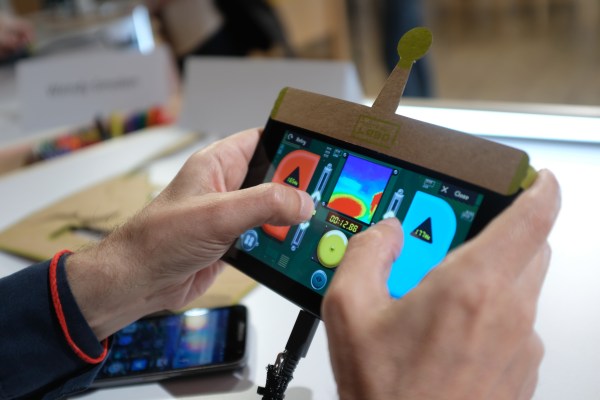Labo is peak Nintendo. It’s strange, it’s innovative, it’s pretty silly and it’s completely unexpected. As longtime PR rep David Young told us during a quick chat at today’s event, “when people think we’re going to zig, we zag.” Nintendo Labo is Maximum Zag.
We spent most of the morning with Labo, at a brightly colored event in New York City, staffed by a team of enthusiastic reps. They walked us through the creation process in a space overflowing with eager kids and tins full of gummy bears and goldfish crackers.
Three quick observations after devoting most of my day to the cardboard kits.
- The “Toy Con” creations are surprisingly and impressively complex and responsive.
- The advanced ones take a while to build, even for a mature (okay, “mature”) adult with fully developed motor skills.
- For all their complexities, they’re still cardboard and should be treated as such.

I didn’t really know what to make of the whole system before actually sitting down with a couple of kits. The online response was divided between the excited and the understandably skeptical. “$80 for some cardboard?” was the basic sentiment in the latter camp.
After a few hours with Labo, I wouldn’t say I feel like a kid again exactly, but I’m entirely impressed by what the company was able to accomplish by thinking outside the (cardboard) box.
In some ways, Labo is as much a showcase for some of the Switch’s under-recognized technologies as it is a showcase for Nintendo’s in-house creativity. Take the Variety Kit’s simplest offering, the RC cars. A Joy-Con slots in either side of the cardboard car, utilizing the haptic HD rumble to propel the vehicle forward through vibration.
The real secret sauce in most of the Toy Cons, however, is the IR Motion Camera. The more advanced kits use strategically placed pieces of reflective tape to trigger movement. Inside the the robot kit are four columns responding to a player’s limbs. When an arm or a leg moves, it slides the piece of tape up. The movement is read by Joy-Con’s on-board camera and the robot on-screen moves accordingly.
There’s a similar mechanism working inside the piano Toy Con. When a key is pressed, it moves the tape, producing a sound through the switch. In both cases, the whole thing is impressively responsive. Aside from the fact that the black keys wiggle a bit (cardboard, remember), it really does feel like playing an electric keyboard.

As for assembly, things start off simple and get complex quickly. One of the attendees offhandedly remarked that the whole thing “felt like assembling Ikea furniture.” That’s not an altogether inaccurate description of the process, honestly. If you’ve got a kid in your life who’s obsessed with construction kits, there’s a lot of appeal here, though a lot of that time is spent popping shapes out of sheets and folding along creases — which can be satisfying in their own right, I suppose.
The amount of time required to execute the projects caught me a bit off-guard. Nintendo gave us about an hour to set up the fishing pole, and only about half of us actually finished the project in that time. Mind you, that kit’s not nearly as complex as, say, the robot, which ships as its own standalone.
Thankfully, the Switch software does a good job of walking you through the process, and you can rewind or speed things up ad nauseam. Full disclosure: we did manage to misplace a couple of pieces during the process, and with the more complex projects, things tend to start to look the same.

The kit’s really not for young kids — at least not on their own. That said, it’s probably a pretty great activity to foster a little bit of parent/child bonding, and there’s something satisfying when things come together as designed. I started having some flashbacks to some of the novel Nintendo experiences from my childhood like Mario Paint, which leveraged a familiar console to offer up a completely different gaming experience.
And like the Super Nintendo title, the software is a suite of simple game experiences, each tailored to the different Toy Cons. Really, it’s like a collection of mobile games — not all are particularly groundbreaking, but each use the technology in interesting ways.
In our demos, at least, the cardboard was surprisingly rugged and responsive. How long it will actually hold up depends entirely on the kid, of course, but in most cases, I’d suggest having some duct tape at the ready. It’s cardboard, after all. Even the most careful kid is going to rip a piece from time to time, and there’s no way to replace them without buying another kit.
The company also unveiled Toy Con Garage at today’s event — another compelling dimension to the Labo experience. I detailed it a bit more here, but essentially it gives players a way to customize the experience through a simple software interface. In the examples Nintendo showed us at the event, they were using the fishing rod to control the RC car. The company had also built an electric guitar out of customized cardboard pieces, built on top of the piano software.
Hopefully the company leans into that customization. After all, hackability is one of the things that made Microsoft’s Kinect a success. If the company plays its cards right here, it can foster a vibrant online community where users can share their custom Labo creations. That would be a local next step in empowering young minds past punching shapes out of cardboard.
[gallery ids="1593719,1593718,1593731,1593717,1593716,1593641,1593721,1593723,1593724,1593725,1593720,1593726,1593728,1593730"]
At $70 for the Variety Kit and $80 for the Robot, Labo still feels pretty steep for what it is. Even so, in the hands of the right kid, there are hours upon hours of potential play time here. And as always, Nintendo deserves kudos for really thinking outside the box of the average console gaming experience.
Both kits are set to start shipping on April 20.
